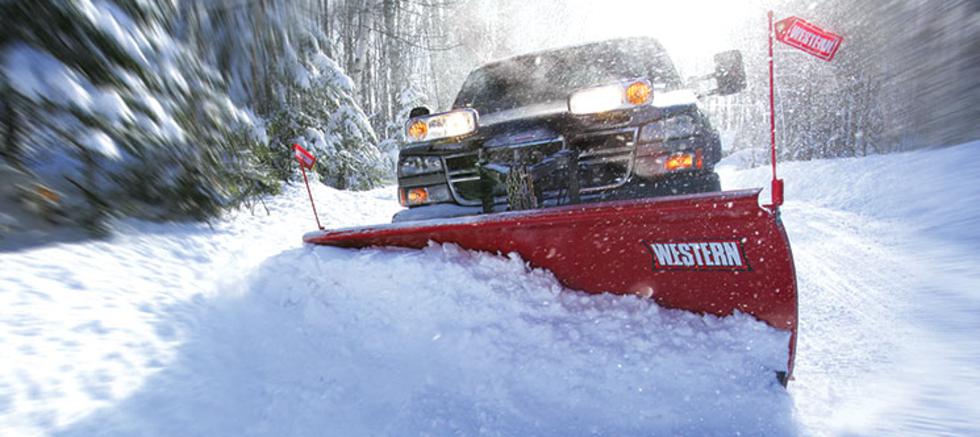Snow Removal Services of Omaha - Nebraska
Fun Facts About Snow
by David Steg on 01/27/16
Salt vs. Sand Mix - Omaha, Nebraska
by David Steg on 01/22/16
Insider's Guide To Commercial Snow Removal Equipment Used in Omaha, Nebraska
by David Steg on 01/16/16
When it comes to keeping you safe and clear during winter, the best Omaha and surrounding area snow removal companies make use of a variety of commercial snow removal equipment. Since not all situations are the same, professionals must employ specific equipment and custom ice removal treatments to specific situations in order to be effective. To help you understand the process, we’ve put together this helpful insider’s guide to commercial snow removal equipment.
Snow Plows
Depending on the size and scope of the job site, we will assess which of our 60+ snow plows will best handle the job. Factors to be weighed during the decision-making process include the shape and size of the site, the volume of snow, where the snow needs to be moved to, and the number of obstacles to work around. We use plows that range from 8’ V plows on pick up trucks, to 17’ specialized box plows on large loaders, and quite a variety in between. Once we’ve considered all the variables, we decide which equipment to route to each site.
Front End Loader Snow Plows
Loaders equipped with large snow plows are an important tool for plowing snow. Especially on larger parking lots that would be a struggle for pick up trucks, a loader with an appropriate snow plow can clear the snow in a timely manner.
When the mountains of snow are taking up too many parking spaces, we utilize front end loaders and heavy duty dump trucks to haul the snow to off site locations.
Ice Melt Trucks
Not all winter weather conditions require snow removal or relocation. Ice management is also a major concern. To that end, we maintain a fleet of trucks equipped to provide pre-treating of parking lots before the snow and ice arrive, and to melt any snow or ice that does form. Based on weather conditions and client expectations, we can choose from a liquid chloride brine, or our customized granular ice melt blend.
Sidewalk Snow & Ice Equipment
For smaller jobs such as sidewalks, we employ ATV’s, small tractors, and Ventracs. These can be fitted with snow plows, hydraulically powered brooms, snow blowers, and ice melt spreaders. Using these quick, compact machines, our crews are able to accomplish their tasks with great efficiency. While not all snow removal companies care to deal with sidewalks, we are uniquely equipped to handle the most complex sidewalk clearing jobs to the highest standards.
Snow Shovels
Although we carry an impressive line of powerful and technically-impressive equipment, there are many scenarios where a simple shovel is the best tool for the job. We approach the task as professionals, however, well aware that over 11,500 people visit the emergency room every year due to shovel-related injuries. Because of the little known (and yet obvious) danger of shoveling, it’s just one more task that we’re happy to take off our customers’ hands, leaving them to enjoy a much safer and happier winter season.
At Snow Removal Services of Omaha, we enjoy not only keeping your Michigan business’ roads, parking lots, and walkways clear, but we also enjoy broadening your understanding of the industry that we love. If you have further questions or comments, or if you would like to learn more about our services, please contact us or comment below.
- See more at: http://www.SnowRemovalOmahaNebraska.comSnow Removal Tips
by David Steg on 12/15/15
Got snow? We bet you do. If your back has been aching after a long winter of shoveling or blowing snow, maybe you’re doing it wrong. Here’s some advice from Consumer Reports home experts that’ll make clearing snow a little easier and get you through the rest of the winter injury-free.
Using a snow blower
If you have a snow blower, Hado says speed matters. Why? Go too slow and you won’t get much distance with your arc of blowing snow. Speed up and the snow could spill out the side of your machine. Experiment until you find the optimal speed.
Your clearing techniques should vary based on how your property is laid out. In general, you don’t want to throw snow on top of pavement you’ve already cleared. The snow that’s thrown from your blower will pack down and stick to the pavement and become harder to remove.
The best method for driveways that have clearance on both sides is to start in the middle and throw the snow toward one edge of the driveway. Make a U-turn then come back down the other side. Keep alternating. This way you won’t have to adjust the chute as often and any snow that falls short will be cleared on subsequent passes. Ideally, you won’t need a second pass.
If your house abuts the driveway, start on the side closest to the house. That way you won’t be throwing snow onto pavement you’ve already cleared.
Snow blower safety. Finger injuries, including amputations, accounted for about half of the more than 3,300 estimated emergency-room visits related to snow blowers in 2012. Back and shoulder strain were also common. Experts say to take frequent breaks to avoid overexertion and never clean the auger with your hands.

Snow shoveling
With shoveling, you’ve got two choices. Shovel after every few inches of snow that falls or wait until the storm ends and remove the snow in layers. Remove only as much snow as you’re comfortable lifting.
Hado recommends clearing your driveway in two stages. First push the snow to the edges with a pusher shovel, such as #8 in the graphic below. Then use a garden variety shovel with sides, like #2, to shovel what’s left out of the way. Your best bet may be a versatile shovel configured for throwing, lifting, and pushing, like #1. If you have uneven pavement, an all-plastic shovel without a steel edge is less likely to catch.
Shoveling safety. An average of 11,500 snow shoveling-related injuries were treated in the ER each year from 1990 to 2006, according to the Center for Injury and Research Policy of the Research Institute at Nationwide Children's Hospital. One in three of those injured suffered lower back problems followed by injuries to the arms, hands, and head. Slips and falls accounted for one in five mishaps and 15 percent of the injuries were caused by being struck by a snow shovel.
The right tools for the job
No matter what snow removal method you use, try to avoid driving or walking on the snow before you get started. Packed snow is harder to clear. And if the snow is sticking to the shovel or the snow blower’s shoot, spray either with silicone or, in a pinch, a cooking spray. To find the best tools for the job, check our appraisal of snow shovels as well as the results of our snow blower tests. And to make sure your cleared surfaces stay that way, see which ice melt works best and are safest for your pets and your property.


